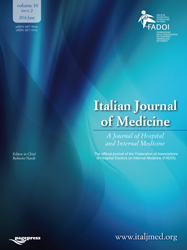Sodium-glucose co-transporter-2 inhibitor-associated non-diabetic ketoacidosis: a case report
All claims expressed in this article are solely those of the authors and do not necessarily represent those of their affiliated organizations, or those of the publisher, the editors and the reviewers. Any product that may be evaluated in this article or claim that may be made by its manufacturer is not guaranteed or endorsed by the publisher.
Authors
Ketoacidosis is considered an emergency metabolic disorder that can be triggered by starvation and alcohol consumption in addition to diabetes. We described an unusual case of ketoacidosis in a non-diabetic young man who presented to our hospital with a complaint of rapid and shallow breathing, weakness and nausea. Fourteen days back, due to heart failure, he started sodiumglucose co-transporter 2 inhibitors (SGLT2-i) in addition to fumarate bisoprolol, sacubitril/valsartan and eplerenone. Based on clinical examination, ketoacidosis was suspected, although his glucose and glycosylated hemoglobin levels were in range. Overall, based on the clinical and laboratory findings, the diagnosis of euglycemic non-diabetic ketoacidosis due to the use of the SGLT2- i was made and SGLT2-i has been discontinued. Although SGLT2-i are effective and safe drugs, it is advisable to carefully evaluate their use also in non-diabetic patients especially when hepatic fibrosis or incorrect eating habits are present.
How to Cite

This work is licensed under a Creative Commons Attribution-NonCommercial 4.0 International License.






